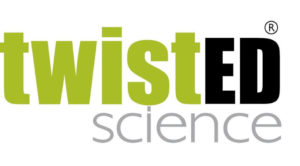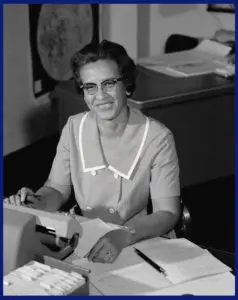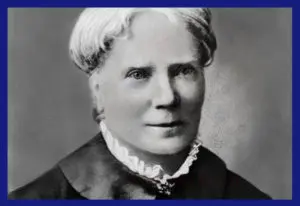History’s Top 5 Most Influential Women in Science, Technology, Engineering and Mathematics (STEM)
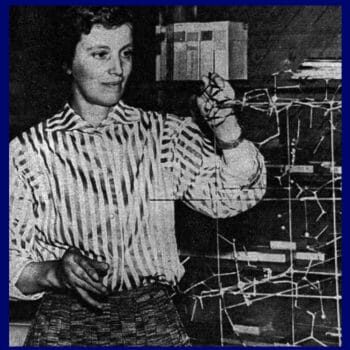
On the 8th of March, people across the globe gathered to celebrate and advocate the achievements of women and the progression of gender equality for International Women’s Day. Bringing together our love of science at TwistED and this important day, we’ve collated some facts on women in STEM and are paying homage to those significant ones who’ve paved the way for today’s female scientists.
The Australian government’s Department of Industry, Science, Energy and Resources states a number of statistics regarding women in STEM. The most eye-catching being that only 17% of the STEM-qualified population in 2016 were women (see Figure 1), and as little as 14.5% of STEM professors.
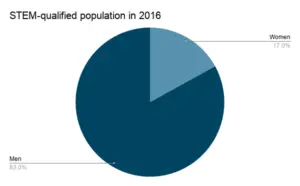
Figure 1: In 2016 women only made up 17% of the overall population of STEM-qualified people in Australia.
It’s clear we’ve got a long way to go before women are as equally represented as men in STEM, but to commemorate global progress, here are some of the glass-ceiling breakers who triumphed even when representation and support were far less!
Marie Curie
As a recipient of two Nobel Prizes in her time, and the first woman ever to win a Nobel Prize, Marie Curie is potentially the most widely known historical woman in STEM. Due to her family’s financial struggle, Curie had to dedicate much of her time to providing for them, and even funded her sister’s medical studies with the agreement the favour would later be returned. She also spent time reading in Polish to female workers as what was termed a “free university”. Already one could see her passion for making knowledge accessible and drive to instill a love of learning for all.

Alongside her husband, whom she met at the university, Curie investigated spontaneous radiation and their research led to the isolation of polonium and radium, for which they were awarded the Nobel Prize for Physics in 1903.
In her individual work, Curie studied intensively the therapeutic properties of radium in alleviating pain, for which she won the Nobel Prize for Chemistry in 1911, then going on to found a radioactivity laboratory in her home city and share her love for science and research with her own people.
Curie in her Parisian laboratory
Rosalind Franklin
The discovery of the 3D double-helix mosaic structure of DNA in 1953 was a huge revelation in the field of genetics and biochemistry, such that it led to the award of a Nobel Prize to three men who had worked on the project in 1962.
It is not widely known that this major discovery was actually headed by British female chemist Rosalind Franklin on her research scholarship at King’s College. Through the use of X-ray data, Franklin was able to prove the proposed structure of DNA. It is alleged that her colleagues acquired this unpublished work without her knowledge and went on to take credit for its discovery.
From the age of 15, Franklin had known she wanted to become a scientist and by 25 had excelled throughout her education to begin a PhD in physical chemistry, focusing on coal. The following year, working at a Parisian laboratory, Franklin was introduced to crystallography by Jacques Mering, which would ultimately lead to her discovery of the DNA structure.
Sadly, Franklin died of ovarian cancer shortly after the publication of her exploited work, in 1958 at the age of 37, and although her colleagues admitted that the discovery would not have been made without her, the Nobel committee ruled against posthumously nominating someone for a Prize.
Franklin was no doubt a pioneering woman in STEM, dubbed the “Dark Lady of DNA”, who, like others, went unrecognised for much of her work.
Franklin at work
Dorothy Hodgkin
Unlike Franklin, chemist Dorothy Hodgkin was recognised for her work when awarded a Nobel Prize for Chemistry in 1964. From a very young age, Hodgkin has recalled being fascinated with crystals, in particular their unique formations. A family friend working as a soil scientist was able to encourage her interest by offering her reagents and minerals.
As a child she was sent from Egypt to England to study, where she attended a school which forbade girls from enrolling in STEM subjects. However, Hodgkin and her friend persisted with a petition allowing them to enrol in chemistry rather than “domestic science”, and were successful. Hodgkin’s grit meant she was able to then pursue a chemistry degree at Oxford in 1928, followed by a PhD.
After making bounds in her research in crystallography, Hodgkin was sought after to determine the structure of penicillin as soon as it was able to be isolated. She succeeded in 1945, which was crucial for its synthetic manufacturing and the role it now plays in modern medicine, for which she was awarded the Nobel Prize.
Hodgkin continued striving to solve the structure of insulin, where she finally succeeded in 1969. Throughout her life she was also an advocate for promoting science in developing countries, knowing herself the disadvantages barring some people from pursuing their STEM passions.
Hodgkin working on molecular structure
Katherine Johnson
Another slightly better known trail-blazer in the name of women in STEM is Katherine Johnson, her notoriety in part due to the film adaptation of her story. As a girl, Johnson was already a mathematical fanatic and accelerated through high school to undertake geometric studies at college at the age of 15, graduating 3 years later. She was then offered one of the first positions as an African-American student teacher at West Virginia University.
Johnson later left this role to undertake a graduate degree in mathematics, but soon changed paths again to start a family with her husband. After three children, Johnson returned to teaching.
A number of years later, at 34 she applied to work for now-NASA as a “computer”, as they were hiring African-American women in large groups to solve math problems for their superiors. Johnson realised she was capable of more and began attending the NASA meetings, previously consisting only of men, and was soon promoted to work on bigger projects. Johnson used her geometric knowledge to research and map the flight paths of spacecraft, where her findings were then crucial to getting the first person to the Moon. Without Johnson this would not have been possible, however she clearly was not afforded the recognition she deserved until now, inspiring the name “Hidden Figures”. Johnson at her NASA desk
Elizabeth Blackwell
At the time Elizabeth Blackwell was inspired to pursue a career in medical science, in the early 1840s, there were no medical colleges that accepted women. At the time of incredibly stringent societal roles for women, Blackwell was scorned for refusing to conform. She suffered much criticism when she was finally accepted to Geneva College in New York in 1947.
She was separated from her classmates and often denied access to facilities. However, when Blackwell graduated first in her class in 1949, she earned the respect of her fellows.
She furthered her study in London and Paris, despite often being assigned immediately to nursing roles in hospitals, and soon came back to New York in search of permanent work at a clinic. Here, now Dr. Blackwell was met with much discrimination, whereupon she decided to open her own clinic dedicated to caring for poor women in the city in 1851. Eight years later, alongside two other female doctors, she opened the New York Infirmary for Women and Children, which strove to give women physician opportunities for employment.
Finally, she founded her own medical college in New York, the head of which she appointed as her sister, when she moved back to London to continue her studies in women’s health at the London School of Medicine for Women.
Elizabeth Blackwell
Blackwell never stopped persisting in promoting women in medical science, even when faced with seemingly insurmountable prejudice.
It is incredibly humbling to recognise the great obstacles these women had to overcome to achieve what they did. Against all odds they prevailed and are now emblems of equality and the importance of STEM everywhere. It is clear that women in STEM are an untapped resource.
At TwistED Science, we understand the need to provide opportunities for both girls and boys to foster a love of science and desire for knowledge, and are proud to be a part of the pursuit for equality in representation in STEM.
– Mardi Gillespie-Dawson
